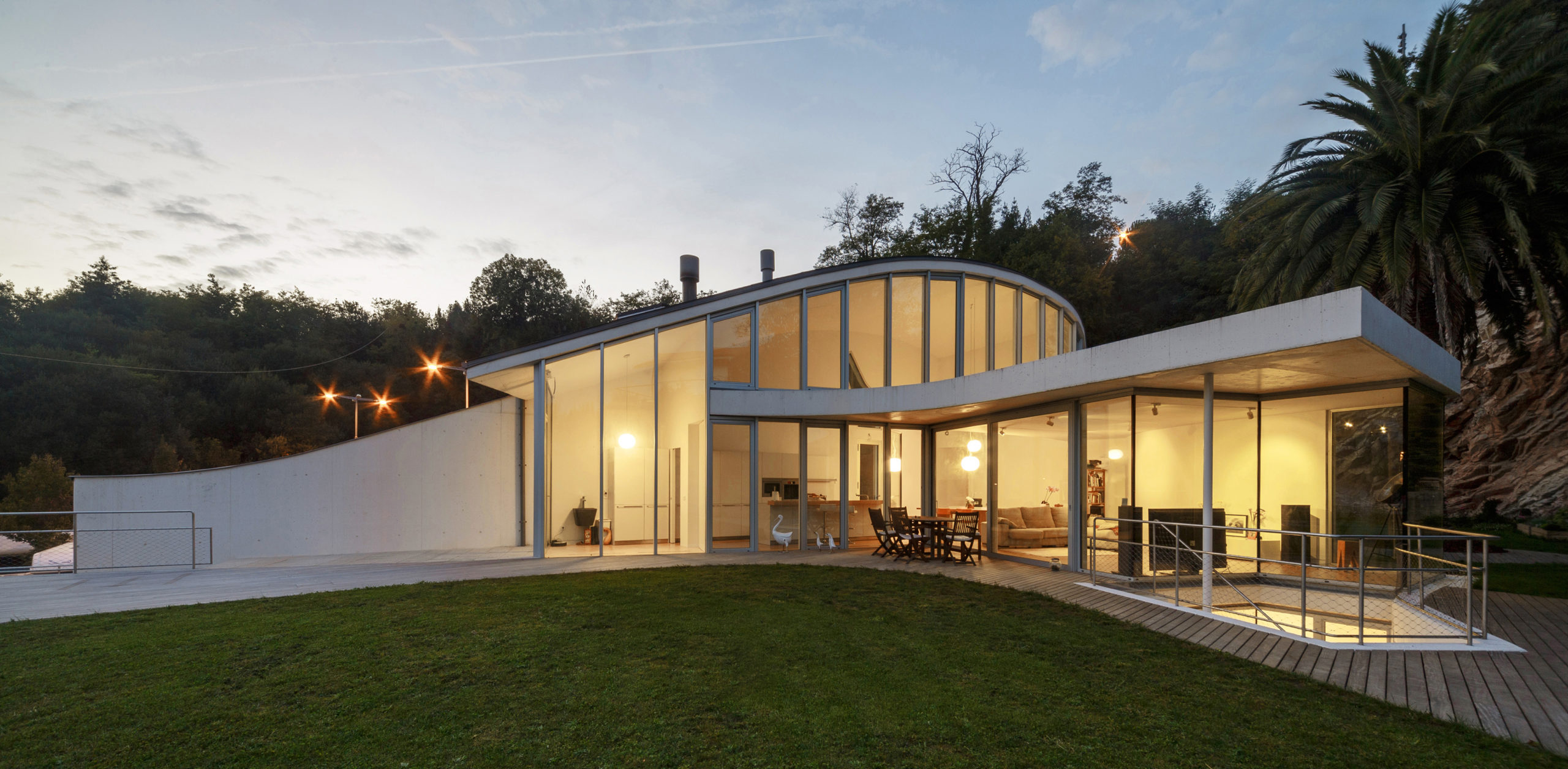House 27 is meant to be effortless and honestly sustainable. A variety of radically different spaces provides choices for the daily experience indoors and outdoors. Shades open and close automatically like the iris of an eye to ensure views and shade. Successive water features provide natural cooling and ventilation, combined with a double volume entrance and careful openings design and orientation. Ecosystem instead of a garden with a place for plants, birds and insects in harmony with the adjacent nature reserve. Strong massing and materials create a distinctive presence, changing throughout the day and season.
Architizer chatted with Ioannis Koutsolambros, partner at Lambrianou Koutsolambros Architects to learn more about the project.
Architizer: What inspired the initial concept for your design?
Ioannis Koutsolambros: The place, the location, the microclimate, the views, orientation, the terroir of the adjacent nature reserve and a deep knowledge of the owners / friends. A common narrative unfolded in joint visits to the plot where everything evolved effortlessly. The prominence of the location dictated careful consideration of the massing and materials. Solid stone clad base and an ever changing ethereal massing with its own angle on top. Nature embracing in all levels.
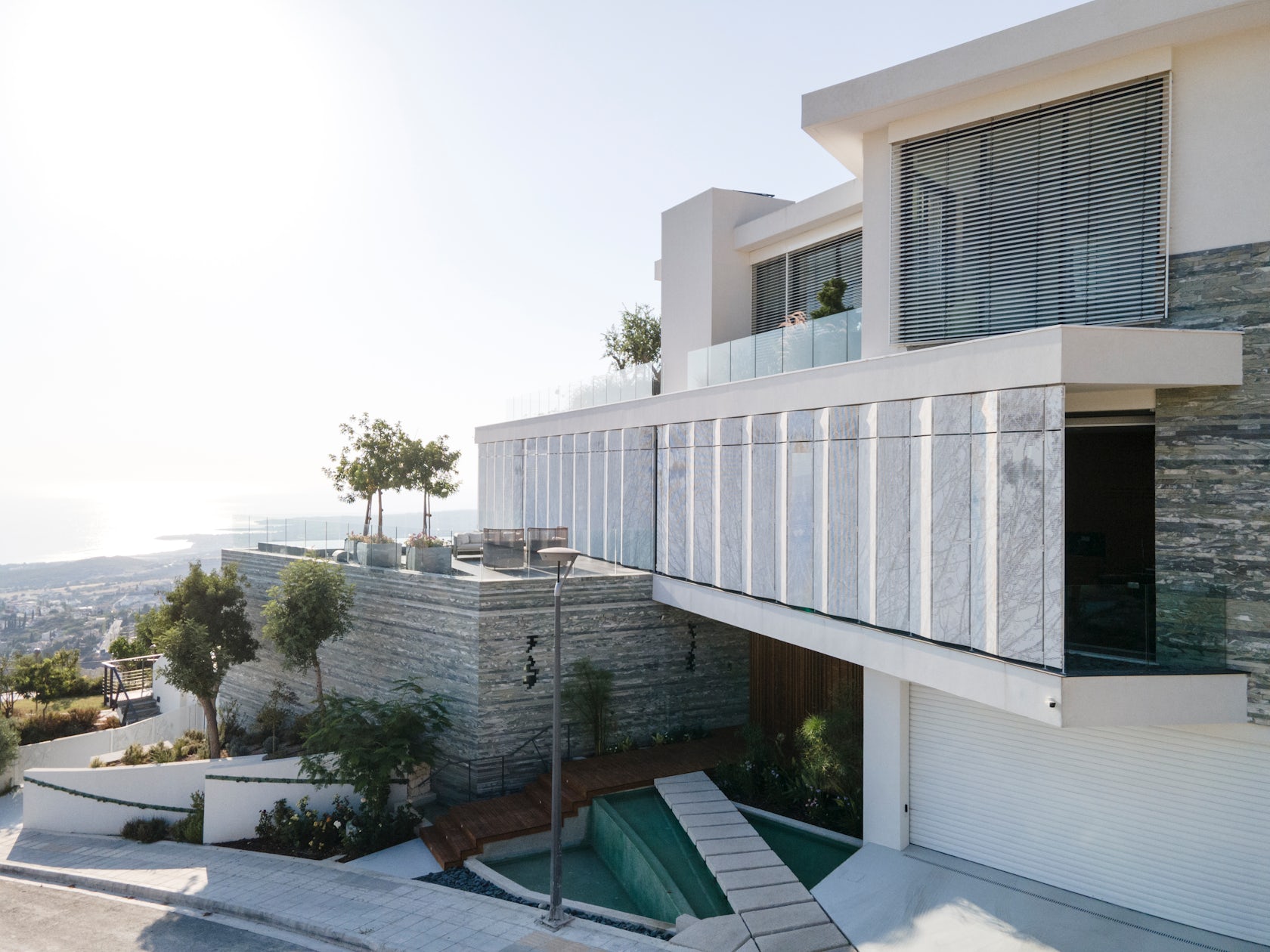
© Lambrianou Koutsolambros Architects
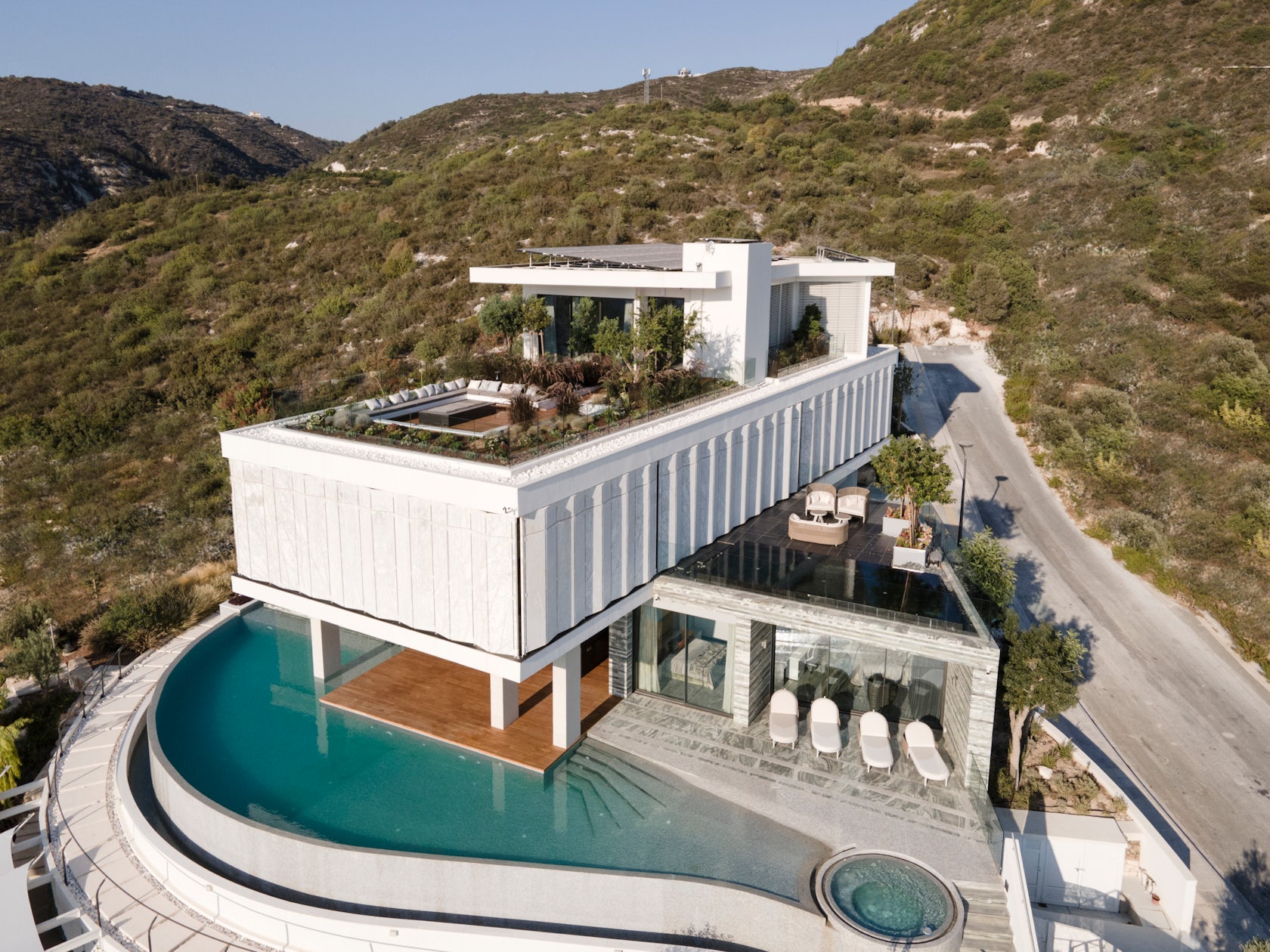
© Lambrianou Koutsolambros Architects
What do you believe is the most unique or ‘standout’ component of the project?
It is intriguing how solid sheets become transparent when penetrated. The moving shades are definitely the standout feature. A big technical challenge, as we had to ensure solar protection of the extensive glass facade only when needed. A discrete whizzing noise indicates that the view will be veiled for some time, to be liberated again.
Digitisation of a forest photo provided the pattern, a dancing forest that rushes to protect the glass from glare and overheating and retreats when not needed. Extensive experimentation ensured optimum hole sizes for clarity of pattern and effective shade. Solar study provided the basic parametres of the automatic system with some on site fine tuning.
Folded aluminium sheets provide both structure and pattern surface, coloured like the house walls so that the upper mass becomes solid and then ethereal, adding a different feel from inside or out.

© Lambrianou Koutsolambros Architects
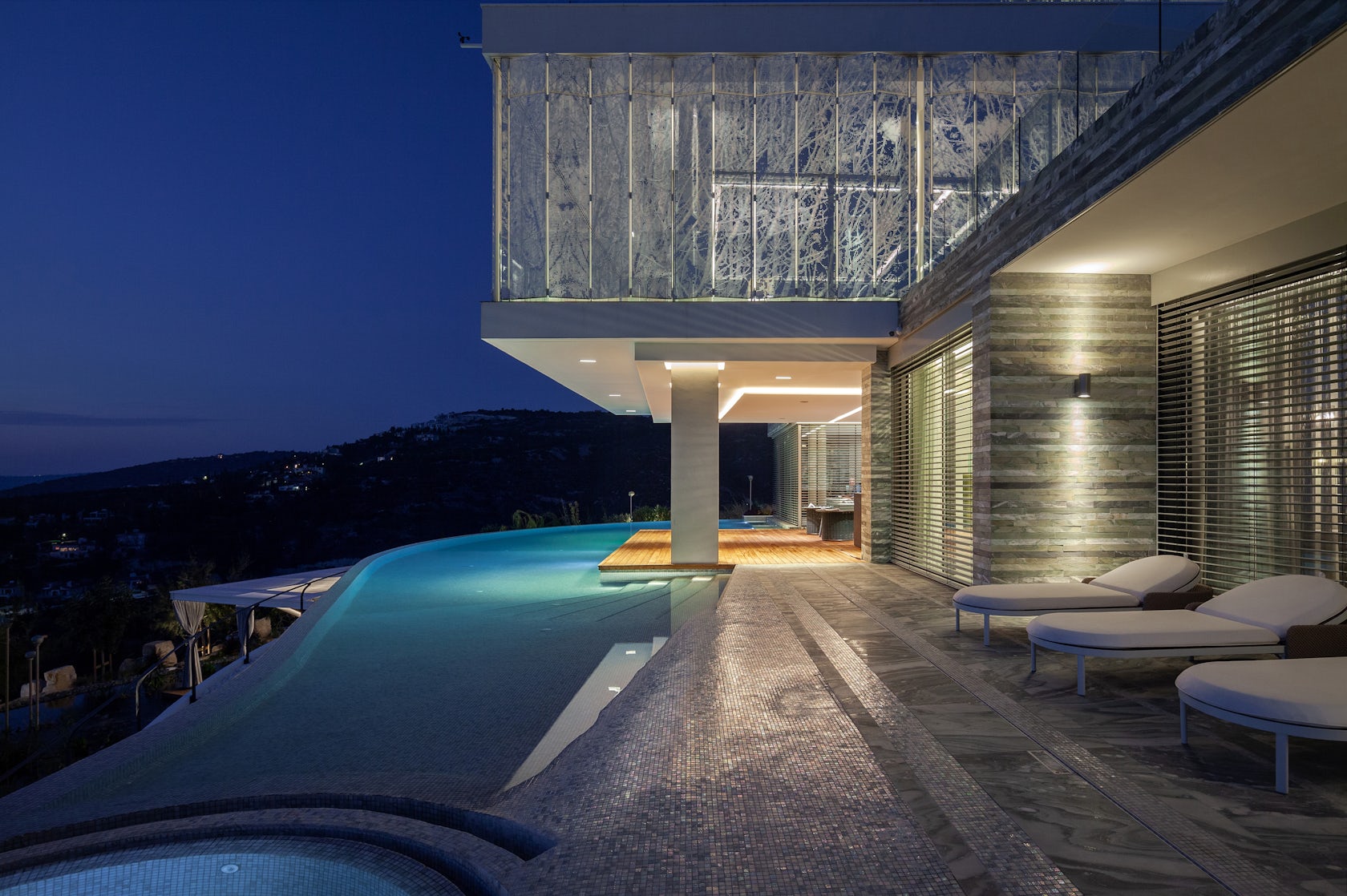
© Lambrianou Koutsolambros Architects
What was the greatest design challenge you faced during the project, and how did you navigate it?
The complexity of the brief. Intense coordination and consultancy was needed in order for the various elements of the project to work together seamlessly. The structure needed to provide rigidity and big spans. Ceilings needed to be both service areas and means of lighting. Heating and cooling needed to be concealed but still effective. Certainly, bioclimatic design needed the most attention. The intensive usage of the prevailing wind, the playful harnessing of sun and shade, the combined care of fauna, flora and people had to work together in order to achieve a living house that breathes and resonates with nature and quality of life for all the inhabitants. All of the above, while still focusing on the architectural qualities of the building

© Lambrianou Koutsolambros Architects

© Lambrianou Koutsolambros Architects
How did the context of your project — environmental, social or cultural — influence your design?
This was the second house we designed for the owners so there was clarity of roles, a mutual understanding and creative freedom. It was natural for all concerned to get passionate about the highest possible level of sustainability and architectural quality that the place required.

© Lambrianou Koutsolambros Architects
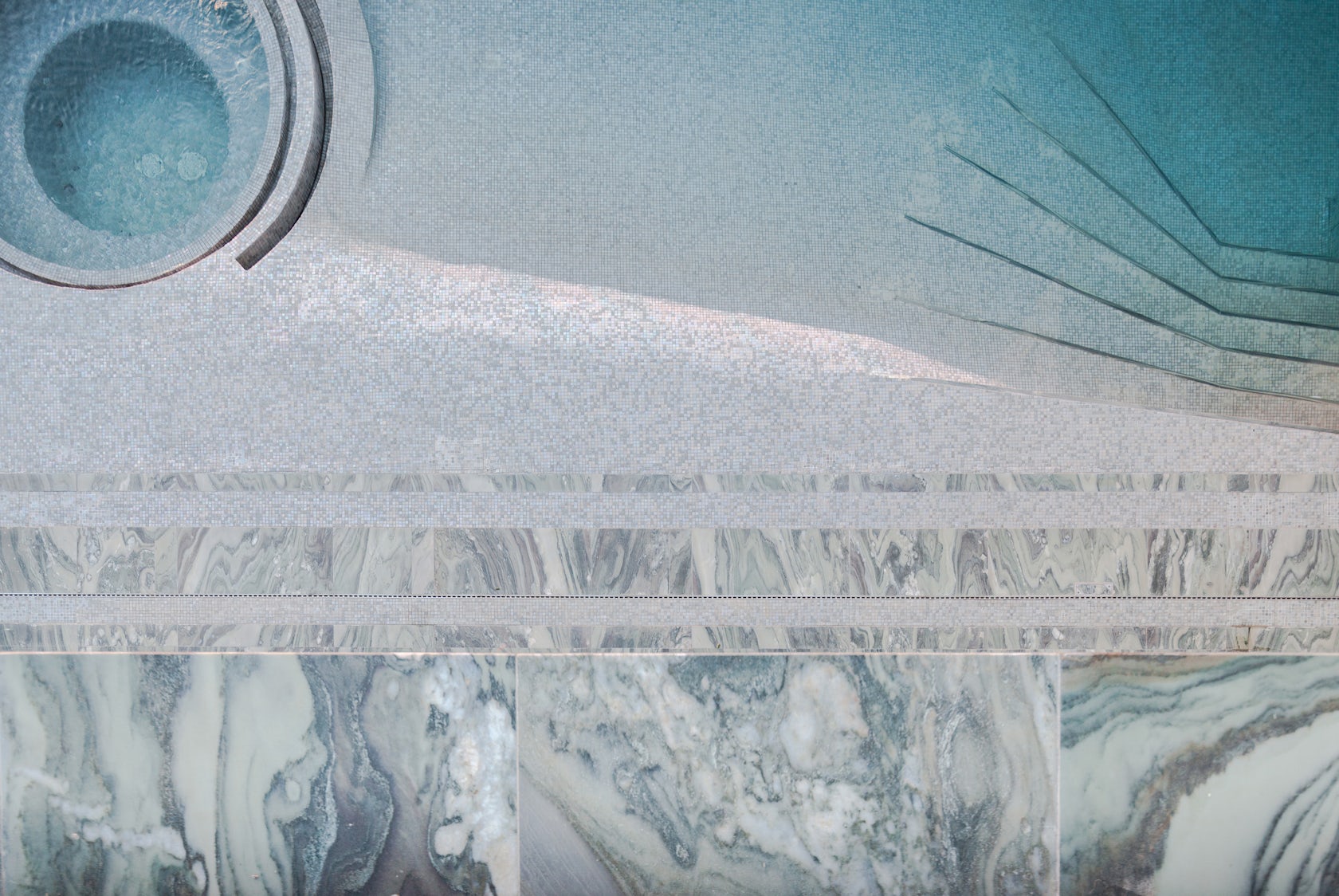
© Lambrianou Koutsolambros Architects
What drove the selection of materials used in the project?
The semantics of nature. The cippolino marble was cut to 6 cm stips and rearranged by colour to give the appearance of an excavated quarry. Off white pool mosaic tiles provided turquoise colour waters while mixing gradually with marble to form a beach detail. Dark finishes help beat the glare of the Mediterranean sun. Planted containers and a planted roof bring nature and coolness to upper levels, continuous synergy. Extensive glass usage, albeit protected from the sun, ensures maximum views. Extensive usage of water inside and out brings visual and sensual freshness.

© Lambrianou Koutsolambros Architects

© Lambrianou Koutsolambros Architects
What is your favorite detail in the project and why?
It has to be the moving shades as it took the most time and effort to achieve. Really a working prototype, as nothing similar was within our grasp. I believe it was our biggest achievement in the project and a proof of my personal theory: You must be a bit uncertain and restless about things you propose, otherwise you just repeat yourself.

© Lambrianou Koutsolambros Architects

© Lambrianou Koutsolambros Architects
How important was sustainability as a design criteria as you worked on this project?
I believe it is clear from every part of the project. We all got passionate from the beginning, including the owners. The goal was a house with a miniscule carbon footprint that is easy to live with and breathes with nature and natural flows.
For example, water usage; not a drop of water is wasted. Instead, sewage after treatment supplies water to the gazebo, cisterns and the irrigation system. At the same time, evaporation of the water used joins plants in creating natural cooling. Synergy of factors is at the core of the project concept.
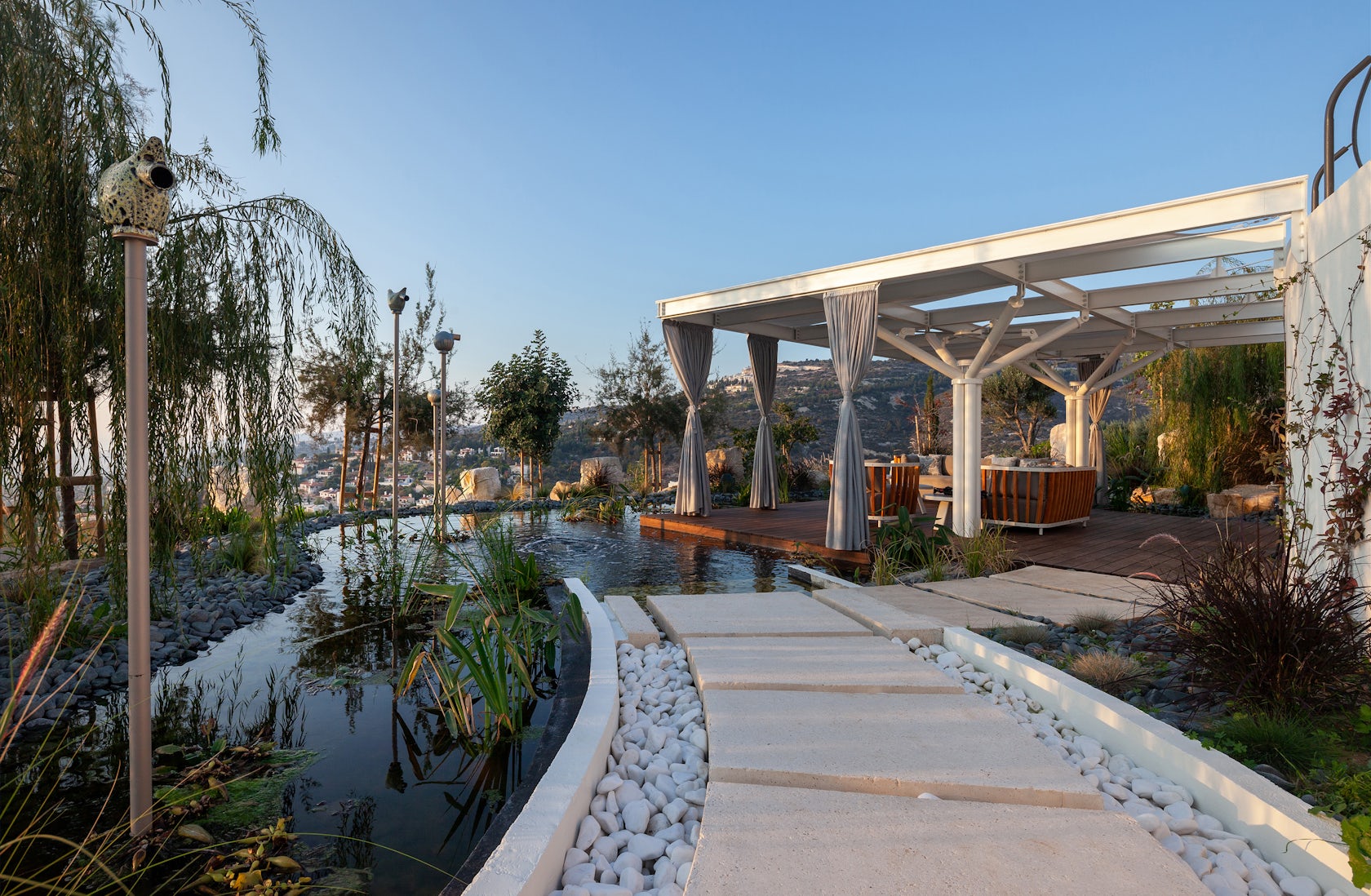
© Lambrianou Koutsolambros Architects
In what ways did you collaborate with others, and how did that add value to the project?
This could be a very long list. We collaborated closely with e/m consultants in order to achieve the seamless integration of services into the design. We even used academic expertise for some avant garde solutions. We worked with a host of experts on technical challenges like soil and plant design, water features, automation, lighting design, slim aluminium sections and many more, including artists for the main door handle, bird nests, friezes and more. Each and every collaboration added another layer of sophistication and a big challenge to maintain architectural integrity.

© Lambrianou Koutsolambros Architects
Were any parts of the project dramatically altered from conception to construction, and if so, why?
Not really. There was an evolution of the concept as more layers of detail were added to the project but our first working model still represents at heart what was built.

© Lambrianou Koutsolambros Architects
How have your clients responded to the finished project?
They are long standing friends from their previous commission, some twenty years ago. Our relationship helped them participate closely in all the decision making and share all the phases of the building process. They found this very intriguing and rewarding, a story to remember.
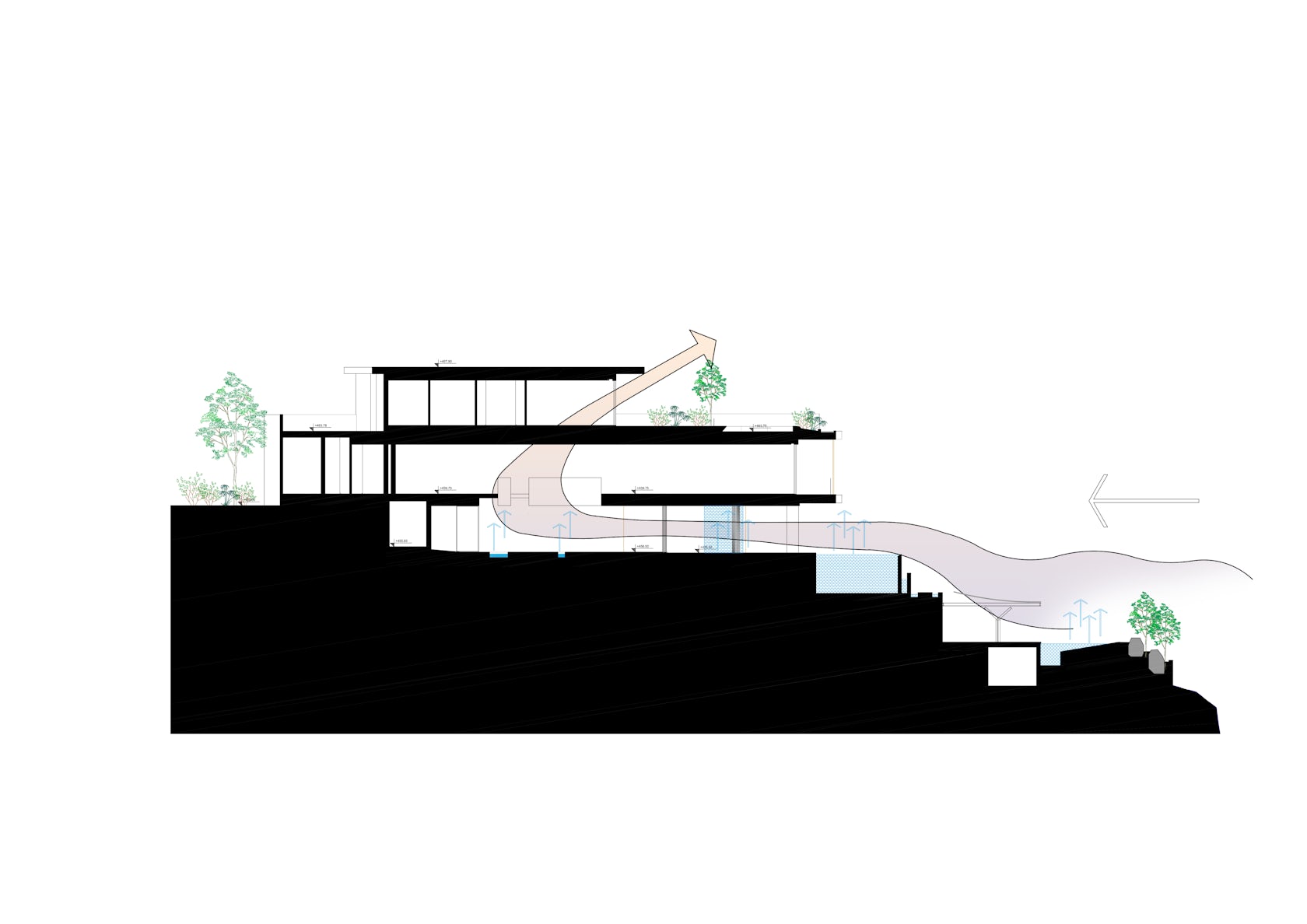
© Lambrianou Koutsolambros Architects
What key lesson did you learn in the process of conceiving the project?
Never play it safe if you want to create something memorable, take risks and work hard to contain them. Use stamina and a lot of common sense if you challenge long standing trends like “this is how we do it in this part of the world”.

© Lambrianou Koutsolambros Architects
How do you believe this project represents you or your firm as a whole?
It is a culmination of what we tried to achieve for years in many fields and projects. The generous budget, being a challenge in itself, allowed ample time and resources for advanced experimentation and creativity. All sustainability measures were integrated into the architectural design, collaboration with all members of the team and collaborators was intense and extensive. All in all, House 27 contains most of our core values, aspirations and experience in a concentrated comprehensive package.
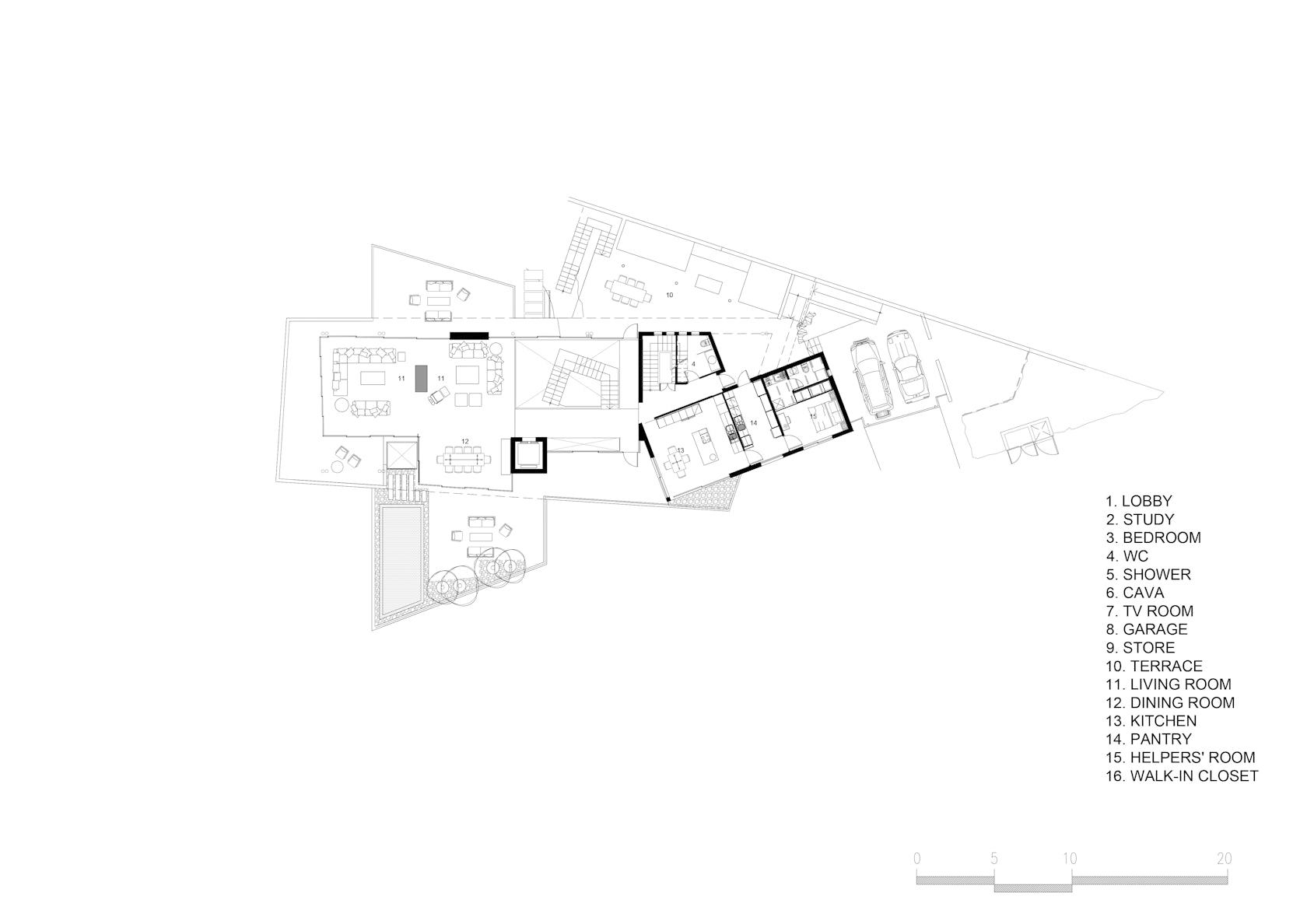
© Lambrianou Koutsolambros Architects
How do you imagine this project influencing your work in the future?
Public exposure has already influenced our business as the vision of the project inspires a select group of people interested in high calibre, environmentally sensitive work. We see House 27 as a stepping stone for even more innovation and sustainability. The process has sharpened the skills of the team and provided valuable experience for the future.
Credits / Team Members
Elli Lambrianou Koutsolambrou architect, Michelle Koutsolambrou architect, Evgenios Zingas architect
Consultants: Dimitris Polykarpou structural engineer, Charalambos Kantas mechanical engineer, Aristos Sophokleous electrical engineer, Nikos Thymakis plant designer
For more on House 27, please visit the in-depth project page on Architizer.







 House 27
House 27 